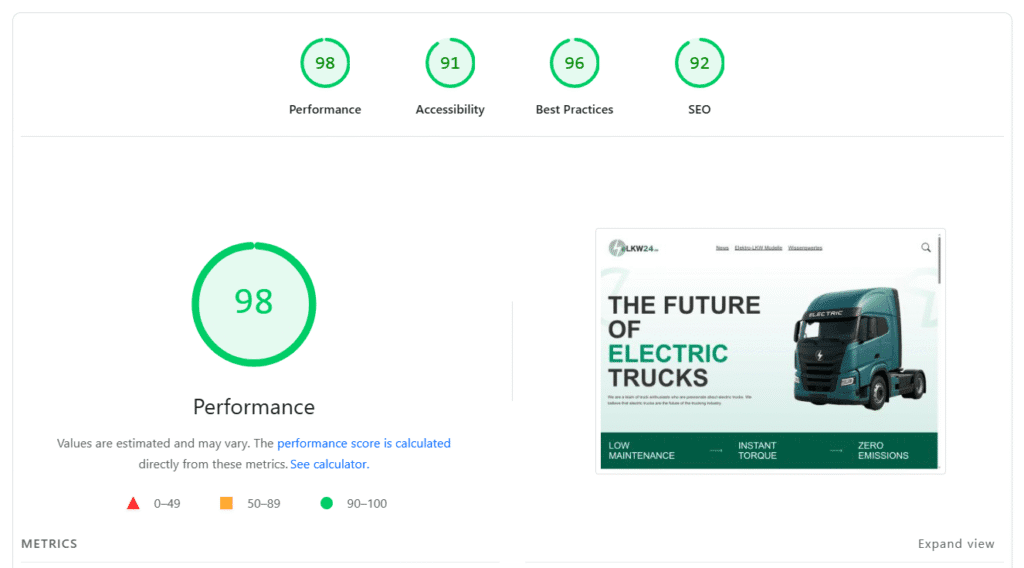I still remember the early days of WordPress theme development projects, getting my hands dirty and diving headfirst into building my very first custom WordPress themes. Back then, the process was straightforward, albeit a bit clunky. I’d start with a basic style.css file and a blank slate, adding rules, nesting selectors, and organizing code until the theme came to life. Over time, that CSS file would grow sometimes to thousands of lines. As projects grew in complexity, so did the headaches: managing bloated stylesheets, dealing with conflicting styles, and trying to hand off a coherent codebase to another developer.
The traditional approach to CSS, whether it was raw CSS or a preprocessor like SASS, had its limitations. It was a great way to start, but it didn’t scale well. Each new component meant a new class, more nesting, and a growing risk of style duplication. This wasn’t just a technical challenge; it was a bottleneck that slowed down development and made long-term maintenance a nightmare. I needed a better way to deliver high-quality, organized code for my clients who purchase my WordPress theme development services.
The Turning Point: Discovering Tailwind CSS
I began searching for a more efficient workflow that would not only speed up my development process but also produce cleaner, more re-useable and scalable code. This led me to a new approach: the utility-first CSS framework. At first, the concept of adding dozens of classes directly into my HTML seemed counterintuitive. I mean, wasn’t that what we were taught to avoid? But as I started experimenting with Tailwind CSS, I quickly realized its power.
Tailwind provides a comprehensive set of low-level utility classes that you can use to build any design directly in your markup. Instead of writing a custom CSS class like .card with all its styles, you simply apply a series of utility classes directly to the HTML element: <div class="bg-white rounded-lg shadow-md p-6">. This seemingly small shift changed everything. I no longer had to leave my HTML file to write CSS. I could style a component, make a tweak, and see the change instantly, all from the same place.
The Unmistakable Benefits for Custom WordPress Themes
Adopting Tailwind CSS for my custom WordPress theme development workflow has been a game-changer. Here are the core reasons I use it for every new project I take on.
Clean, Scalable Code
Tailwind’s utility classes are the foundation of a clean, scalable codebase. By using these small, single-purpose classes, you eliminate the need for bloated stylesheets. The styles for any given component are right there in the markup. This makes it incredibly easy to debug and maintain, even for large, complex themes. When a new developer joins the project, they don’t have to hunt through a massive CSS file to understand a component’s styling; they can see it instantly. This level of clarity is invaluable for WordPress theme development from scratch.
Faster Development Time
The most immediate benefit I noticed was the massive increase in my development speed. The days of context-switching between HTML and CSS files are gone. I no longer have to waste time inventing clever class names for every single element. Tailwind’s naming convention is intuitive and consistent, allowing me to build layouts and components at a breakneck pace. For clients who need professional WordPress theme development services, this speed means faster project completion and quicker deployment.
Flawless Responsive Design
Building responsive layouts with Tailwind is incredibly intuitive. The framework provides built-in responsive utilities that allow you to easily define styles for different screen sizes directly within the HTML. For example, md:flex will apply display: flex; only on medium-sized screens and up. This streamlined approach makes mobile optimization a breeze, ensuring that every website I build looks and works perfectly on any device.
Consistency Across Projects
Tailwind’s pre-defined design system ensures consistency across all my custom WordPress themes. By using a limited, curated set of colors, spacing, and typography, I can maintain a cohesive look and feel throughout a project. This consistency not only improves the user experience but also makes it easier to build new components that seamlessly integrate with existing ones.
Tailwind + Gutenberg: The Perfect Match

The evolution of WordPress with Full Site Editing (FSE) and Gutenberg has made Tailwind an even more essential tool. The modern WordPress ecosystem is block-based, and Tailwind’s utility classes are a perfect fit for styling these reusable components. I can create custom Gutenberg blocks, style them with Tailwind, and give clients the power to build unique layouts with a consistent design system. It’s the ideal way to offer truly custom, block-based solutions without a single line of bloated CSS. If you’re looking for a great place to start, a solid boilerplate like brads-boilerplate-wordpress on GitHub is an excellent resource.
Why Clients Love the Results

My clients might not know the technical details of a utility-first framework, but they certainly notice the results. Websites built with Tailwind CSS are faster, more performant, and easier to maintain. The clean code leads to better page speed scores, which in turn helps with SEO and conversions. When I hand off a project, clients get a beautiful, high-performing site that’s designed to scale and attract more business. Happy clients lead to repeat business and positive referrals.
My Workflow: How I Do It
To make all of this happen, my workflow is lean and efficient. I use the Tailwind CLI and PostCSS to compile and optimize my styles, creating separate, highly-optimized CSS files for the frontend and the Gutenberg block editor. This ensures that the final CSS is purged of any unused classes, keeping the file sizes as small as possible.
To keep development moving smoothly, I use Browsersync for live reloading, so I can see changes instantly as I work.
Finally, to maintain a consistent and professional codebase, I integrate ESLint and Prettier into my workflow. This allows me to automate code formatting and catch potential errors early on, ensuring every project is delivered with high-quality, organized code.
Final Thoughts: Tailwind is the Future
For anyone looking to streamline their development process and build better, faster websites, I highly recommend giving Tailwind CSS a try. It’s more than just a framework; it’s a modern approach to web development that produces superior results. It has fundamentally changed how I approach every project, making my work more enjoyable and my results more impactful.
If you’re looking for professional WordPress theme development services or want to build your next website using modern tools like Tailwind CSS, don’t hesitate to schedule a call. Let’s create something truly amazing together.


Leave a Reply